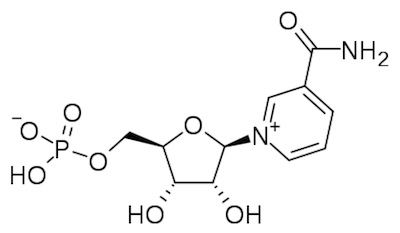Posted 21 October 2021 - 03:24 PM
Researchers publishing in Aging have discovered that an energy metabolism compound is associated with a protein that suppresses amyloid beta in a mouse model of Alzheimer’s.
The compounds involved
The researchers describe nicotinamide mononucleotide adenylyltransferase 2 (Nmnat2) as a key co-factor for energy metabolism. This compound is involved in creating NAD+, which is essential in basic metabolic processes, from NMN, a well-known compound that is commonly taken as a supplement.
A disintegrin and metalloprotease domain 10 (ADAM10) is responsible for cleaving amyloid precursor protein (APP), which is a source of amyloid beta, the aggregates of which are the key hallmark of Alzheimer’s. If ß- and ?-secretases are used to cleave APP, amyloid beta is the result [1]. However, ADAM10 is responsible for a-secretases, which do not cleave APP into amyloid beta [2] and instead form secreted APP, which has been shown to be neuroprotective [3].
AMP-activated kinase (AMPK) is a regulator of metabolism and is upregulated when nutrients are in short supply, such as during caloric restriction. Increased expression of AMPK is associated with longevity [4].
The experiments
The researchers discovered several relationships between these compounds. First, they examined Tg2576 mice, a model of Alzheimer’s disease, and compared them to their wild-type counterparts. They found that the brain cortices of these Alzheimer’s-prone mice were severely deficient in both ADAM10 and Nmnat2.
They then tested the effect of Nmnat2 in a cellular culture. After they transfected cells with a plasmid responsible for producing Nmnat2, they found that ADAM10 and the associated a-secretases were increased by approximately one and a half times and that amyloid beta was decreased by approximately half.
The researchers also examined the relationship between Nmnat2 and AMPK. They compared the cortical cells of Tg2576 and wild-type mice, finding that both of these compounds were halved in the Alzheimer’s-prone mice. They also found that Nmnat2 in cellular culture led to a substantial increase in AMPK.
The NAD/NADH ratio, a marker of metabolic activity, was found to be upregulated in Nmnat2-transfected cells and downregulated in mice prone to Alzheimer’s disease.
Finally, the researchers performed another test to try to understand the cause-and-effect relationship involved. The researchers examined the AMPK promoter AICAR and the AMPK inhibitor Compound C. Cells that were given AICAR had more ADAM10 and less amyloid beta; cells that were given both Nmnat2 and Compound C did not enjoy the positive effects associated with Nmnat2. The researchers, therefore, conclude that AMPK is critical in the increased production of ADAM10.
Conclusion
This is a mouse and cellular study that relies on models and chemical analysis to determine effects. The effects of increasing Nmnat2 were not studied in live animals, and this study certainly does not provide any evidence that increasing NAD+ through any supplement can help to alleviate Alzheimer’s in human beings.
However, it illustrates a very interesting and perhaps targetable relationship, and more investigation is needed in order to determine if Alzheimer’s disease can be affected on a metabolic level.
| HELP SPREAD THE WORD |
| Please connect with us on social media, like and share our content, and help us build grass-roots support for healthy life extension: |
|
| Thank You! |
Literature
[1] Vassar, R., & Citron, M. (2000). Aß-generating enzymes: recent advances in ß-and ?-secretase research. Neuron, 27(3), 419-422.
[2] Postina, R., Schroeder, A., Dewachter, I., Bohl, J., Schmitt, U., Kojro, E., … & Fahrenholz, F. (2004). A disintegrin-metalloproteinase prevents amyloid plaque formation and hippocampal defects in an Alzheimer disease mouse model. The Journal of clinical investigation, 113(10), 1456-1464.
[3] Mattson, M. P. (1997). Cellular actions of beta-amyloid precursor protein and its soluble and fibrillogenic derivatives. Physiological reviews, 77(4), 1081-1132.
[4] Salminen, A., & Kaarniranta, K. (2012). AMP-activated protein kinase (AMPK) controls the aging process via an integrated signaling network. Ageing research reviews, 11(2), 230-241.
View the article at lifespan.io















































